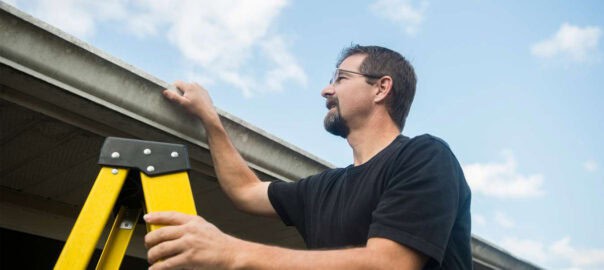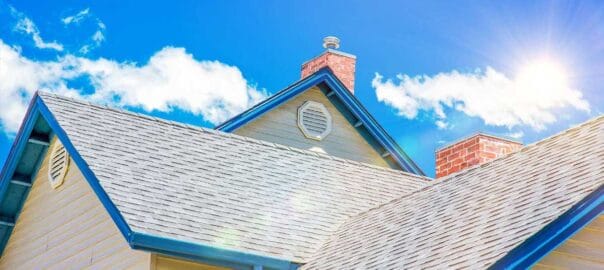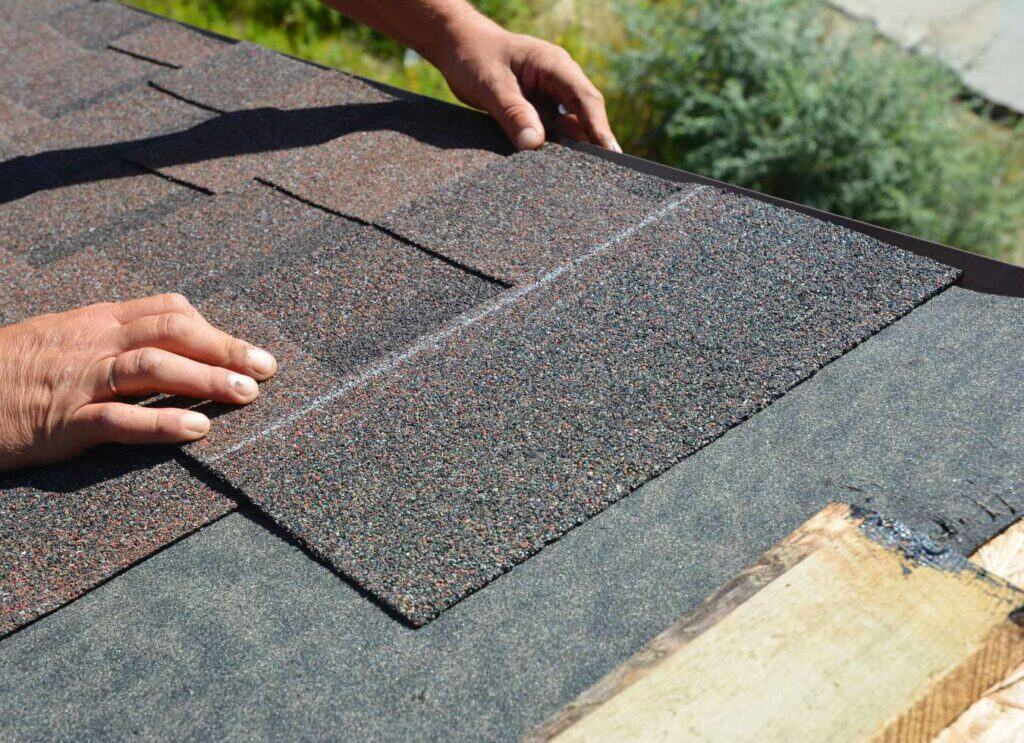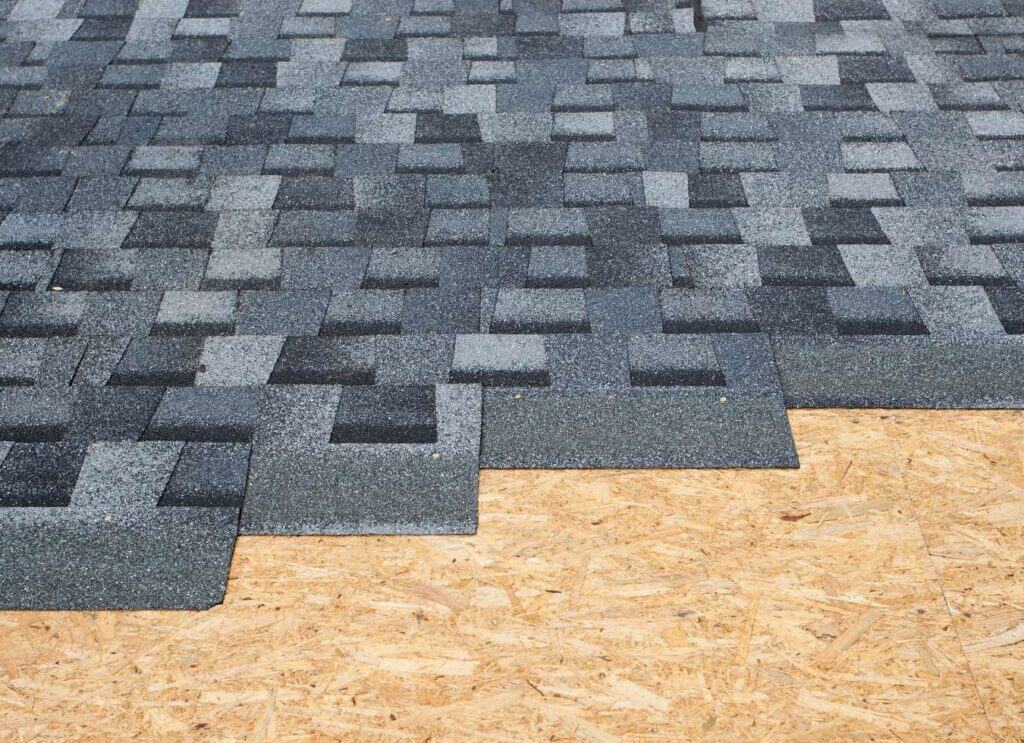Ah, Colorado weather! You never really know what’s coming next. One minute, it’s sunny; the next, you’re caught in a hailstorm from a natural disaster movie. It’s like Mother Nature’s way of keeping us on our toes.
But while you might be cozy inside, sipping your coffee and wondering how much longer this storm will last, your roof is out there taking a beating. And if that hailstorm was anything like the infamous storms we get here in Colorado, it’s probably not just some harmless “pebble” hitting your home. No, no. Hailstones can get as big as golf balls, and when they slam into your roof at 60+ mph, they can cause severe damage.
But how do you know if your roof is damaged? What should you look for in signs of damage after a hailstorm? What’s the difference between a minor issue that can be fixed and a full-blown disaster that needs a roofing contractor to assess the extent of the damage? Entire roof replacement? That’s where professional roofers come in.
Here at our company, we specialize in identifying storm damage and providing solutions. Denny’s Roofing, we know exactly what to look for after a big hailstorm. So grab your raincoat, and let’s break down the checklist of things we look for when we come out to inspect your roof after a storm. By the end of this blog, you’ll know exactly what we’re doing up there—no more guessing or damage showing up in your living room.
Let’s dive into the hailstorm roof inspection process step by step!
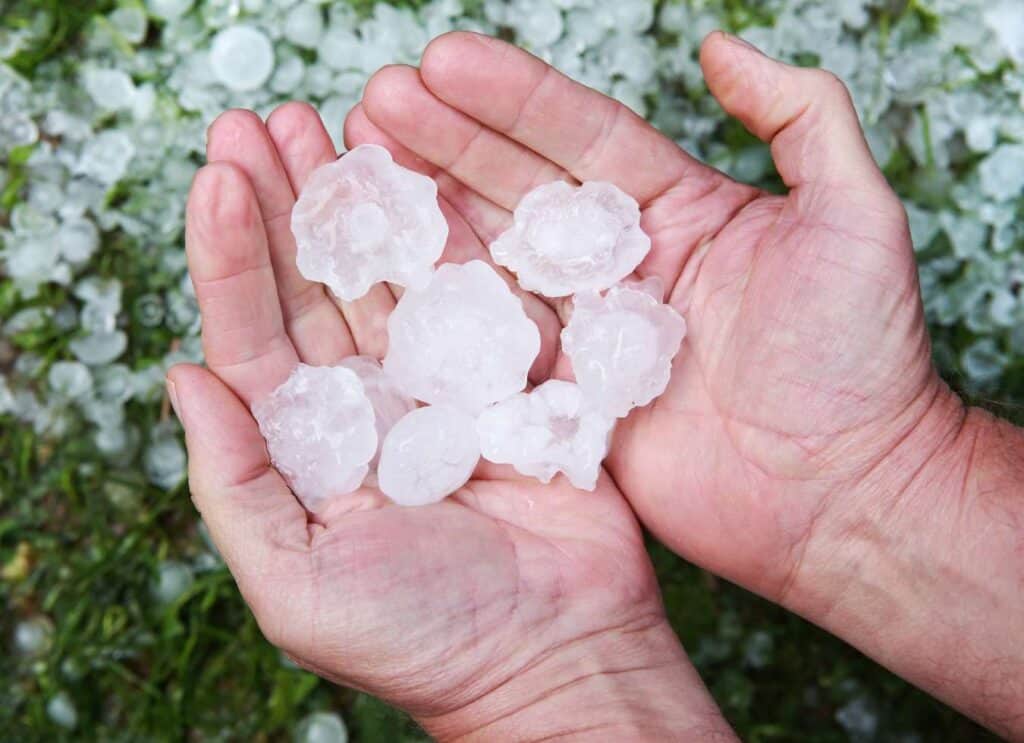
Why Hail Can Be Such a Nightmare for Your Roof
Before we get into the specifics, let’s talk about why hailstorms are such a big deal regarding roof damage. It’s easy to underestimate how destructive those little chunks of ice can be, especially when talking about hailstones that can be the size of a baseball and cause significant roof hail damage: golf balls, softballs, or grapefruits.
When hail strikes your roof, it’s not just a minor annoyance. The impact is real. Hailstones can cause everything from minor dings to serious cracks. The real danger comes from the fact that damage to roofing materials can often be hidden, making it easy for signs of damage to go unnoticed until they become serious. What might seem like a minor dent can lead to significant leaks, water damage, or structural issues if not addressed quickly.
So, what do we look for when we inspect your roof after a storm? Let’s break it down.
1. Missing or Damaged Shingles: The Obvious Culprit
Let’s start with the most obvious sign of hail and or wind damage—missing shingles. You’ve probably seen shingles flying off in a storm or noticed a few on the ground after a hailstorm. If this happens, it’s clear that your roof has suffered some damage. But even if the shingles are still in place, we’re not out of the woods yet!
A professional roofer doesn’t just look at shingles and say, “Well, they’re still there, so everything’s fine!” Oh no. We inspect for cracks, tears, and curls in the shingles. We also look for punctures or loosened edges caused by the impact of hailstones. These issues might not be immediately noticeable from the ground, but they can compromise the integrity of your roof and lead to water leaks over time; a damaged roof can lead to more significant issues.
I can’t tell you how often homeowners feel their roof is fine when they have hail damage, but that can qualify them for a new roof from their insurance company. Have us come out and do a FREE Roof inspection to ensure your roof is in good shape. Let a professional help you make sure what you are seeing is what WE are seeing, too.
2. Granule Loss: The Silent Killer of Roofs
Okay, we’ve got your shingles covered, but another sneaky little culprit is not always as obvious: granule loss. Hailstorms don’t just damage the surface of shingles; they can also knock off those tiny granules that coat the top layer of asphalt shingles.
Think of these granules as sunscreen for your roof. They protect the underlying material from harmful hail impact and UV rays and help maintain the roof’s overall durability. When hail strikes, it can knock these granules loose, leaving your shingles exposed to the sun. Over time, this leads to premature aging, cracking, and deterioration of the shingles. If enough granules are lost due to hail impact, your roof could wear out much faster than it would otherwise.
So, how do we spot this damage? We’re looking for areas of shingles with a “bald” appearance where the granules have been knocked off. This is one of the most common (and the most dangerous signs of damage are often not visible until a thorough inspection is performed) signs of hail damage that homeowners usually miss.
3. Impact Dents: Not Just Cosmetic
When you think of hail damage, you might imagine a few dings or dents in your shingles. While that’s part of it, impact dents can be more serious than they appear. These dents can compromise your roof’s integrity and create weak spots that allow water to seep in.
While metal roofing can handle hail damage a little better, it’s still vulnerable to dent marks that affect the roof’s finish and can lead to further damage from hail. Asphalt shingles can also experience crater-like dents that may lead to cracks. These impact marks can allow water to get underneath the shingles, which, over time, can lead to roof leaks and water damage inside your home.
A professional roofer will inspect each shingle to look for these dents and assess the overall damage severity.
4. Flashing Damage: The Unsung Hero of Your Roof
You probably don’t think much about your flashing, but it’s one of the most essential parts of your roof’s defense system. Flashing is the metal or membrane material installed around areas like your chimney, vents, and skylights to prevent water from seeping in.
When hail hits, it doesn’t just target shingles. It can also damage the flashing. Cracks, dents, or gaps in the flashing can create an opening for water, which means leaks in your home’s interior. Not catching it early can lead to mold growth, rotting wood, and more extensive damage.
Because flashing damage is often subtle, we pay special attention to these areas during a post-storm inspection for signs of damage.
5. Gutters and Downspouts: Impacted by Hail, Too!
We all know that hailstorms can cause damage to your roof, but what about the gutters and downspouts? After a big storm, we always check these areas to ensure they’re still in good condition. Hail can dent and crack gutters, which can interfere with water flow. Clogged or broken gutters can cause water to back onto your roof, leading to leaks and potential foundation issues.
By inspecting your gutters, we can ensure that water is directed away from your roof and foundation as it should be, avoiding further damage down the road.
6. Hidden Water Damage: The Attic Inspection
The damage from a hailstorm isn’t always visible from the outside. One of the most critical steps in a hail damage inspection is to check the attic for water infiltration. If hail has caused cracks or openings in your roof, they might not be immediately visible inside your home. That’s why we climb into your attic to check for any signs of moisture, leaks, or water stains. Signs of damage from hail can indicate a problem with your roof, the beams, or the insulation.
If we find any water damage, it’s a clear sign that the roof has sustained more damage than it appears from the outside, and it’s time for serious repairs or a roof replacement.

What to Do After a Hailstorm: Why You Should Call a Professional Roofer
Okay, so let’s say the hailstorm has passed, and you’re wondering what to do next. Do you wait and see if anything leaks, or do you call a professional roofer immediately?
Here’s the thing: Even if you don’t see any apparent damage immediately, it’s always best to schedule an inspection to assess any potential roof hail damage after a storm. Hidden damage can wreak havoc on your home if left unchecked, and the sooner you catch it, the better. Also, hailstorms are a typical insurance claim trigger, and the longer you wait to file a claim, the harder it may be to prove the storm caused the damage.
A professional roofer, like the team at Denny’s Roofing, can help you identify the damage and guide you through the insurance claims process. We’ll work with your insurance company to make sure you get the coverage you need and help you understand your options when it comes to roof repairs or replacement may be necessary if your roof has been damaged by hail.

Other Popular Questions Related to Repairing Hail Damage
Q: How can a professional roofing contractor help you identify roof damage after a hailstorm?
A: A professional roofing contractor can help you identify roof damage by performing a thorough inspection. They look for visible damage, such as dents, cracks, and missing shingles, which are common signs of hail damage. Their expertise allows them to spot damage that might not be immediately obvious to an untrained eye.
Q: What are the common signs of roof damage from hail that I should look for?
A: Common signs of roof damage from hail include dents in metal roof components, cracked or missing shingles, bruised shingles that feel soft to the touch, and damaged flashing. You may also notice granules from asphalt shingles collecting in gutters or downspouts.
Q: Why is it essential to inspect your roof after a hailstorm?
A: Inspecting your roof after a hailstorm is crucial because it helps you identify any damage early on, preventing further damage. Early detection allows for timely repairs, which can avoid the need for a complete roof replacement and help maintain the structural integrity of your home.
Q: How do I know if I need to file an insurance claim for hail damage to my roof?
A: You may need to file an insurance claim if the inspection reveals significant damage to your roof. A professional roofing contractor can assess the full extent of the damage and provide documentation that your insurance provider may require to process your claim.
Q: What steps should I take when filing an insurance claim for hail damage to my roof?
A: When filing an insurance claim, contact your insurance company to report the damage. Document the damage with photos and a detailed report from a professional roofing contractor. Follow your insurance provider’s instructions for filing the claim and cooperate with any adjuster inspections.
Q: Can I spot damage from the ground, or need a professional inspection?
A: While you may spot some visible damage from the ground, such as missing shingles or dents in metal roof components, a professional inspection is recommended to determine the full extent of the damage. Professionals can access areas that are difficult to see from the ground and identify less obvious types of damage.
Q: What types of damage can hail cause to a roof?
A: Hail can cause various types of damage to a roof, including cracked or missing shingles, dents in metal roofing, damaged flashing, and granule loss on asphalt shingles. Severe damage may lead to leaks and structural issues if not addressed promptly.
Q: How does working with your insurance company help repair hail damage?
A: Working with your insurance company ensures you receive the coverage you’re entitled to for repairing hail damage. They can guide you through the claims process, help you understand your policy, and ensure that repairs are done to professional standards.
Q: Is a free roof inspection after a hailstorm beneficial?
A: A free roof inspection after a hailstorm is beneficial as it provides an expert assessment of any potential damage without initial cost. It helps you understand the condition of your roof and decide whether further action, such as repairs or filing an insurance claim, is necessary.

Wrapping Up: Protect Your Roof and Your Home
After a big hailstorm, your roof may be the last thing on your mind—but it shouldn’t be. Whether dealing with minor dents or significant damage, it’s always best to call the professionals for a thorough inspection.
At Denny’s Roofing, we specialize in post-storm roof inspections and can help you understand exactly what’s happening with your roof. We’ll identify any hail damage, guide you through the insurance process, and work with you to ensure your roof is in tip-top shape for whatever weather Colorado throws at us next.
Don’t wait for the leaks to start—call us today for a free inspection, and let’s ensure your roof is ready to weather whatever storm comes next! Because here in Colorado, it’s not if another hailstorm will come—it’s when!

